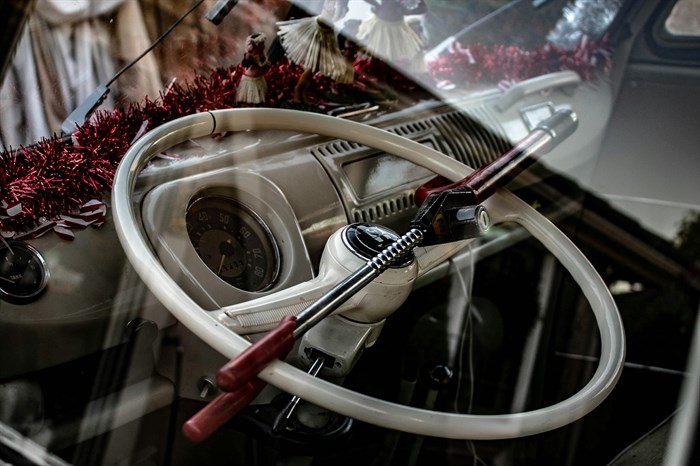Kamloops, Okanagan have some of the highest auto theft rates in the country

A 50% increase in auto theft in Ontario and Quebec has spurred the federal government into hosting a national summit in Ottawa to find ways to reverse the trend.
Despite the fact that BC has one the lowest rates of auto theft in the country, the per capita auto theft rates in Kamloops and some Okanagan cities are right up there with big cities like Montreal and Toronto.
As well, the types and reasons for auto theft in Western Canada are totally different than the high-tech – and sometimes violent – world to the East.
“I think BC is a unicorn,” Sid Kingma, director of investigative services for Equite Association’s Western and Pacific Region, told iNFOnews.ca from his Alberta office. “They have a high population. They have three good sized ports. Yet their numbers are really low.”
Equite is a national organization that focuses on reducing and preventing insurance fraud and crime.
The most recent data Kingma could pull from the Canadian Police Information Centre data base was for the last week in January. It recorded 572 auto thefts for that week in Ontario, 192 in Quebec, 198 in Alberta and only 69 in BC.
While that is the most recent data available, Stats Canada shows the theft pattern over recent years, the most recent being 2022.
BC had the lowest rate per capita of larger provinces. Only Nova Scotia, PEI and Newfoundland and Labrador were lower.
The data for individual cities showed a theft per 100,000 rate of 137 in Vancouver, 330 in Toronto and 471 in Montreal.
For the same year, Kamloops topped them all at 546 per 100,000, Penticton came in at 524 while Kelowna was just behind Montreal with 435. Far lower were theft rates in Vernon at 290 and West Kelowna at 289.
Over the past five years, the auto theft rate in Kamloops nearly tripled to 546 from 189.
Kamloops RCMP have no explanation for that steady growth but given the relatively small numbers stolen each year in that city they point to one key factor for its high rate.
“We do notice a significant impact to our auto thefts when certain prolific offenders are in custody – observing spikes when they’re out and operating in the community, and big drop-offs when they’re in custody,” Kamloops RCMP Supt. Jeff Pelley said in an emailed statement to iNFOnews.ca. “There was one week this year when we actually had zero auto thefts reported and that was when three identified prolific auto thieves were in custody.”
Thefts in Eastern Canada are high-tech. The electronics are hacked so the vehicles can be stolen, new key fobs created then they’re shipped overseas – mostly to the Middle East and Africa – where they can be sold for as much or more as they cost in Canada.
That's not happening so much in Western Canada but it may only be a matter of time, so owners need to be aware of how and why these newer vehicles are being stolen.
The auto theft world changed with new federal regulations that took effect in 2007 requiring all new vehicles to be equipped with demobilizers.
“After that happened, there was a huge drop in auto theft,” Kingma said. “But we all love our little conveniences and, of course, manufactures of any type, including auto manufacturers, try to give us those conveniences to entice us to buy their products.”
That led to the creation of proximity fobs and push starts. Doors will automatically unlock when a driver is close by so the key doesn’t have to be taken out of a purse or pocket. The push starts work the same way.
And that opened the door wide to the high-tech thieves.
“The bad actors will reverse engineer the security systems, find the vulnerabilities and take advantage of them,” Kingman said.
There are two main types of high-tech theft: relay and CAN Bus or Controller Area Network attacks.
“Relay theft is where the bad actors work in tandem,” Kingma said. “They go up to the front door of a residence. They hold up a really big antennae, hoping your key fob is close enough to the door. That antenna amplifies the signal from the key fobs far enough to your vehicle, which is parked in your driveway. There’s another bad actor. He tries the door.
“If the antennae is working, it amplifies the signal. The car thinks the key fob is in close enough proximity so it unlocks and opens, then the same thing with the push start. They are able to drive it away. They get to a safe distance away and they are able to reprogram a new key for it.”
One important defence for such attacks is to simply make sure the key fob is stored far away from the front door, Assistant Insp. Eugene Lum, Officer In Charge of the BC Integrated Municipal Provincial Auto Crime Team or IMPACT, told iNFOnews.ca.
Another option is to store the key in a Faraday pouch to prevent its signal from being stolen. Hiding GPS tracking devices, like Air Tags, in vehicles is also helpful in tracking a vehicle if it is stolen.
The CAN Bus system is the brains of the vehicle.
“Bad actors know different access points of that CAN Bus line and they are able to access it, infiltrate it, send a single within that CAN Bus line which tells the vehicle’s computer to unlock and emergency start,” Kingma said. “And away they go, they can reprogram another key when they’re a safe distance away.”
The trade in high-end stolen vehicles is so lucrative that some thieves are resorting to violent home invasions or car jackings.
Equite has put out a list of the top 10 stolen vehicles in the country:
- 2020 Honda CR-V
- 2022 Dodge Ram 1500 series
- 2020 Ford F150 series
- 2020 Lexus RX series
- 2021 Toyota Highlander
- 2019 Honda Civic
- 2021 Jeep Grand Cherokee
- 2020 Land Rover Range Rover
- 2006 Chevrolet/GMC Silverado/Sierra 1500 series
- 2021 Jeep Wrangler
READ MORE: Vehicle theft soared in 2022, led by Quebec and Ontario: report
BC and Alberta car thieves have not yet set up the sophisticated crime rings that can arrange overseas shipping, although some vehicles stolen in the West are shipped back to ports in Montreal or Halifax.
“The majority of stolen vehicles that IMPACT has dealt with have been taken by chronic or prolific auto offenders and, typically, they’re stealing cars to use for transportation from A to B or to commit other property crimes,” Lum said. “In BC traditionally, they don’t see cars as commodities whereas you’ve got the organized crime groups out east. They look at stolen vehicles as a way to make money.”
That’s why the IMPACT list of the most stolen vehicles in BC is topped by older vehicles and has no overlap with the national list:
- 2006 Ford F350
- 1998 Honda Civic
- 1998, 2018 Ford F150
- 2006 Ford F250
- 2006 Ford Econo Van
There are some key and simple defensive tactics that can be used to lessen the risk of auto theft.
“You would be surprised with the number of vehicles that are stolen because people have left keys sitting in the cup holder,” Lum said.
In the winter, it’s all too common for people to leave their vehicles unlocked that are running to warm up in cold weather.
Ironically, it’s old-school technology – steering wheel locks – that are still one of the best auto theft deterrents.
“For the sophisticated theft, the bad actors are not showing up with tools to defeat steering wheel locks,” Kingma said. “They’re showing up with their laptop and their tools to do their sophisticated theft. Having that steering wheel lock on there is another barrier for them, as well as being visual.”
The old-style Club is still advertised for sale in places like Canadian Tire for $94.99.
Of course, there is one major drawback.
The club has a key that has to be physically taken out of a pocket or purse, inserted and turned to be effective.
Keys for ignitions may be one option the Federal summit will consider as a way to reduce theft, but Kingma sounds skeptical.
READ MORE: As Poilievre drives the conversation on car theft, Liberals say solutions are coming
“People just love those little convenience and don’t want to go back to (ignition keys),” he said.
Which makes it unlikely that someone addicted to a remote entry/start system will bother going through all the hassle of locking and unlocking a Club.
To contact a reporter for this story, email Rob Munro or call 250-808-0143 or email the editor. You can also submit photos, videos or news tips to the newsroom and be entered to win a monthly prize draw.
We welcome your comments and opinions on our stories but play nice. We won't censor or delete comments unless they contain off-topic statements or links, unnecessary vulgarity, false facts, spam or obviously fake profiles. If you have any concerns about what you see in comments, email the editor in the link above. SUBSCRIBE to our awesome newsletter here.



